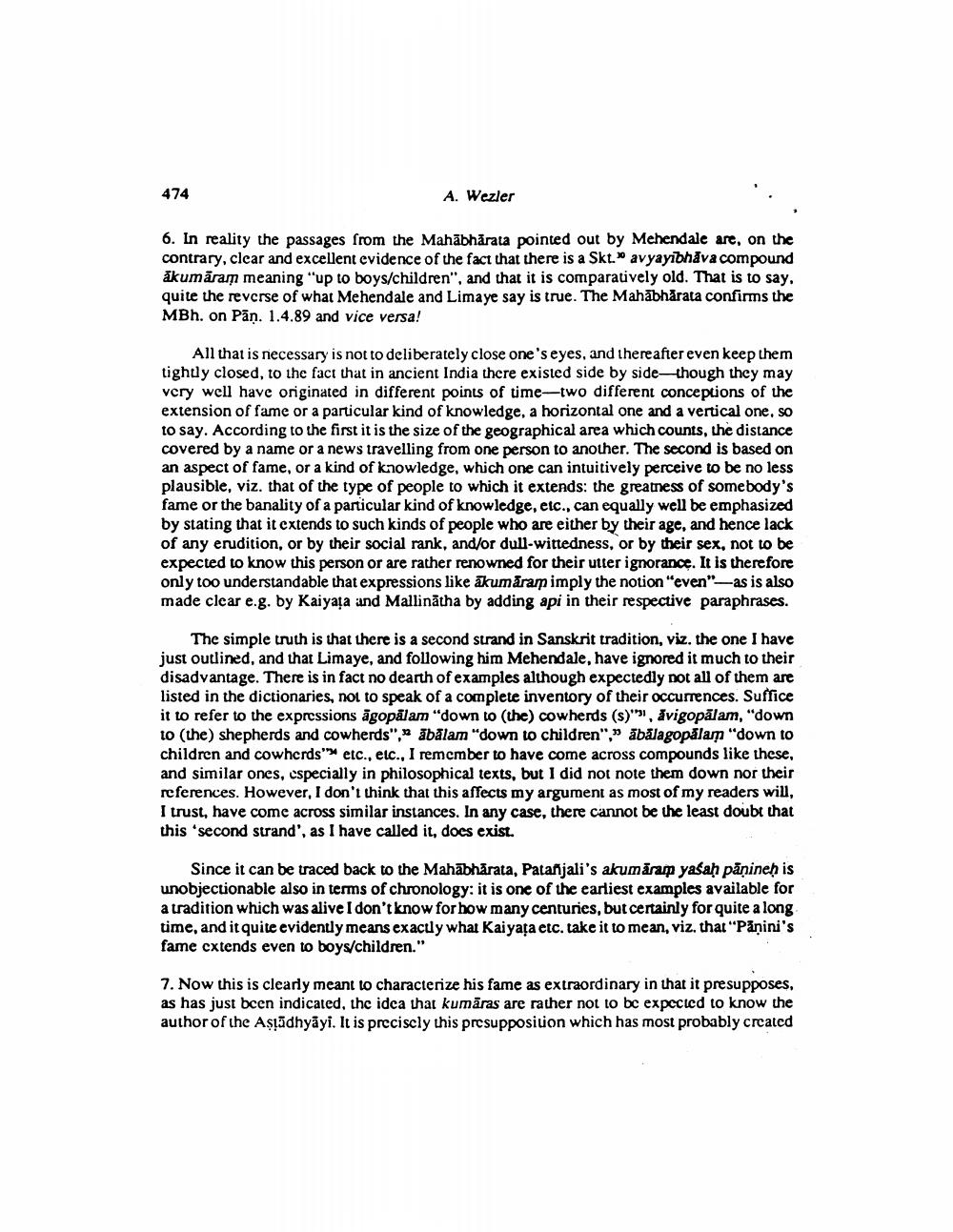Book Title: How Far Did Paninis Fame Really Extend In Patanjalis View Author(s): A Wezler Publisher: A Wezler View full book textPage 7
________________ 474 A. Wezler 6. In reality the passages from the Mahābhārata pointed out by Mehendale are, on the contrary, clear and excellent evidence of the fact that there is a Skt. avyayıbhāva compound akumāram meaning "up to boys/children", and that it is comparatively old. That is to say, quite the reverse of what Mehendale and Limaye say is true. The Mahābhārata confirms the MBh. on Pāņ. 1.4.89 and vice versa! All that is necessary is not to deliberately close one's eyes, and thereafter even keep them tighuy closed, to the fact that in ancient India there existed side by side—though they may very well have originated in different points of time-two different conceptions of the extension of fame or a particular kind of knowledge, a horizontal one and a vertical one, so to say. According to the first it is the size of the geographical area which counts, the distance covered by a name or a news travelling from one person to another. The second is based on an aspect of fame, or a kind of knowledge, which one can intuitively perceive to be no less plausible, viz. that of the type of people to which it extends: the greatness of somebody's fame or the banality of a particular kind of knowledge, etc., can equally well be emphasized by stating that it extends to such kinds of people who are either by their age, and hence lack of any erudition, or by their social rank, and/or dull-wittedness, or by their sex, not to be expected to know this person or are rather renowned for their utter ignorance. It is therefore only too understandable that expressions like akumaram imply the notion "even" -as is also made clear e.g. by Kaiyata and Mallinātha by adding api in their respective paraphrases. The simple truth is that there is a second strand in Sanskrit tradition, viz. the one I have just outlined, and that Limaye, and following him Mehendale, have ignored it much to their disadvantage. There is in fact no dearth of examples although expectedly not all of them are listed in the dictionaries, not to speak of a complete inventory of their occurrences. Suffice it to refer to the expressions ägopalam "down to (the) cowherds (s)", avigopalam, "down to (the) shepherds and cowherds", ābālam "down to children"," abalagopālam "down to children and cowherds etc., etc., I remember to have come across compounds like these, and similar ones, especially in philosophical texts, but I did not note them down nor their references. However, I don't think that this affects my argument as most of my readers will, I trust, have come across similar instances. In any case, there cannot be the least doubt that this 'second strand', as I have called it, does exist. Since it can be traced back to the Mahābhārata, Patanjali's akumārap yaśaḥ pāņinen is unobjectionable also in terms of chronology: it is one of the earliest examples available for a tradition which was alive I don't know for how many centuries, but certainly for quite a long time, and it quite evidently means exactly what Kaiyata etc. take it to mean, viz. that "Panini's fame extends even to boys/children." 7. Now this is clearly meant to characterize his fame as extraordinary in that it presupposes, as has just been indicated, the idea that kumāras are rather not to be expected to know the author of the Aşlādhyāyi. It is preciscly this presupposition which has most probably createdPage Navigation
1 ... 5 6 7 8 9 10 11
